The White Lines in Wheeling During the ‘Crazy ’80s’
The Elbow Room, the Next Door, Tin Pan Alley, the Pirates Cove, the Cork & Bottle, and Fabulous Fannies – and that was just downtown Wheeling.
The Eagle II in Woodsdale, Mac’s Club in Pleasanton, Ernie’s Esquire in Bethlehem, Glassworks at Wilson Lodge, and the Merrymint and Mr. Z’s on Wheeling Island also were consistently crowded destinations.
In the 1980s, this hotel was in far better condition and was the home of Fabulous Fannie’s, a popular nightclub near the Capitol Theatre.
Maybe the owners knew, and maybe they didn’t know. In most cases that mattered to no one — not to law enforcement, not to the customer, and not to the many usual users in the restrooms. Cocaine changed Wheeling’s party scene beginning in the late-1970s, but the high-powered really took hold in what former FBI special agent Tom Burgoyne often refers to as the “Crazy ’80s.”
“In the 1970s it was more about the marijuana and the LSD,” said Burgoyne. “But in the 1980s the coke took over, and some of the most prominent people in this Valley got involved. Doctors, lawyers, professionals — the people with money got involved because cocaine was more expensive than the other stuff that was available.
“As soon as the FBI was granted jurisdiction over the cocaine trade in 1983, we immediately got involved with those ‘Crazy ’80s,’ and I say that because no one seemed to care where they did it or how and where they bought it,” he continued. “Very quickly it got to the point where we couldn’t really care about the small-timers. We started tracking it back to where it originated.”
Don Atkinson works the “midnight shift” for Ace Garage these days, and he’s also the Wheeling city councilman representing Ward Five, but 35 years ago he was a grown, beer-drinking, self-proclaimed “goof” in his 20s who just was beginning his wrecker career at the Fulton-based towing company. In those days, he confirmed, it was easy to tell what tow jobs involved the drug cars.
“Most of the guys that would get pulled over by the police usually came over from Ohio, and something was wrong with their cars,” he said. “They either had a headlight out or forgot to even turn them on or because the plates didn’t match or whatever. I would go get them, and sometimes you could smell the pot or see the baggies and the seeds or the mirrors and straws.
“But you know what? They always came to get their cars, and they always had a big wad of cash,” he recalled. “Those guys always paid in cash and got their cars out of there before anyone with a badge came snooping around for whatever reason. We didn’t inspect anything, so who knows what could have been inside one of those trunks?”
Perhaps the people of the region were partying so hard in the 1980s in an effort to forget the continuing decline in the Upper Ohio Valley’s economy. One of the area’s biggest employees, Wheeling-Pittsburgh Steel Corp., filed for Chapter 11 protection under federal bankruptcy laws in the mid-1980s, and a couple of labor strikes impacted as many as 5,000 employees throughout the tri-state area.
The opening of the Ohio Valley Mall in Belmont County included original anchors J.C. Penney, Sears, Stone & Thomas, and L.S. Good, and one by one those businesses then soon vanished from downtown Wheeling. The mall setting was the newest trend in the retail industry, and it sucked away the memorable atmosphere so many recall about crowded sidewalks, talking trees, multi-floor department stores, and eateries of all kinds.
During the same decade, ironically, two Wheeling-area landmark festivals were founded. The Upper Ohio Valley Italian Heritage Festival debuted along Market Street in 1983, and Oglebay Park’s “Festival of Lights” attraction initially lit up in 1985 as the dreamchild developed by Randy Worls and WWVA’s Ross Felton.
An impressive concert schedule at the former Wheeling Civic Center added to the party atmosphere in Wheeling during the 1980s.
And the concert lineup at the Wheeling Civic Center was mainstream and impressive with nationally touring bands like Heart, Boston, Kansas, Night Ranger, Bryan Adams, and Def Leppard performing.
The population of the Friendly City had shrunk to 43,000 by the time the 1980s arrived, and the region’s residents were hearing something about a transition away from manufacturing to something called the “service industry.” High school students were encouraged by their teachers and their parents to exit the Upper Ohio Valley to seek opportunity elsewhere soon after they flipped their tassels during commencements.
“I don’t recall anyone really even talking about that, though,” said this 50-something-year-old lady we’ll refer to as the “Bar Fly.” “What most people I was around back in those days were talking about was the cocaine. The coke was everywhere.
“We did it recreationally then, but never from Monday to Friday. When someone started doing cocaine during the work week, we knew they had a problem,” she said. “But for most of us, once the weekend arrived, we were doing coke non-stop because it was just one gigantic party no matter where we went.
“No one was flagrant about it, and it seemed to me like everyone was doing it, and no one seemed to care. It didn’t feel like we were doing anything illegal,” she continued. “We just bought it to add to the party. The dealers weren’t pushing it. We had to seek it out, not that it was very difficult at all. But once the weekend was over, we all got ready to go back to work on Monday.”
The “Bar Fly” held several jobs during this decade, most often serving drinks at various local bars in Ohio and Marshall counties. That’s where she met Paul Hankish and how she heard the stories concerning the legends about the area’s organized crime.
“The older guys in the bars would always talk about Bill Lias and how he was kind of like Robin Hood,” she said. “They said he would give turkeys to people who needed them around Thanksgiving and that he would give kids toys around Christmas time because the parents couldn’t afford it.
“Those older guys never painted Bill Lias as a monster, but they all believe it was Lias who ordered the Hankish bombing. They all wondered how in the hell Hankish survived it, especially when they see the pictures of what was left of the car,” said the Bar Fly. “It was always neat for me to hear the stories because I knew there was still the Mob in the area. Everyone knew, and one way we knew was when Paul Hankish would come into the places where I was working. Sometimes he would be in a wheelchair, and other times he had his fake legs on, and he was using his crutches. No matter what, he always had one of his guys with him, he was always very polite, and he always went to the back rooms. Those older guys respected Lias, and they seemed to respect Hankish too.”
She knew when Hankish visited those establishments, the evening’s earnings would spike.
The A.C. Buffet rests on the location where the Eagle II Lounge was located along National Road near T.J.’s Sportsgarden.
“It was his thing, I guess,” the Bar Fly explained. “No matter how much he ate or drank, I knew I would find a folded up $100 under his napkin. It was his signature thing, I guess, but it was always there.
“I would only see Hankish at a few places like Figaretti’s when it was in Elm Grove and at Nick’s and at Ernie’s Esquire,” she continued. “He always ordered Dewar’s on the rocks, and when I first met him, I was scared of him because of all the stories. But after a while I started thinking he wasn’t the monster he was made out to be, and those $100 tips didn’t hurt.”
Small, brown vials with tiny spoons attached to the caps, rolled-up bills, and crowded restrooms were common no matter what the evenings included during this era, the Bar Fly explained. Some snorted more than others, and house parties often featured mounds of cocaine on kitchen tables.
“I was one of the girls who had the long pinky nail. That way all I had to do was pour a little in the cap,” she said. “And we shared; us girls did. It wasn’t unusual for four or five girls to crowd into the restroom, and after we left the bars, we were up all night.
“There were the days when I would wake up in the afternoon and really have no idea how I got there,” the Bar Fly admitted. “We eventually pieced it all together once we got back together for the next night’s party.”
Burgoyne believes cocaine was used by some men as bait for the ladies like the Bar Fly.
“While we would watch certain guys back in those days, we saw it take place over and over,” he explained. “And I’m not talking about prostitutes. I’m talking about some of the most beautiful ladies in the Valley who were with these guys because of the coke.
“The guys with the coke probably thought they would get lucky if they shared with those girls, and I’m sure that was the case some of the time,” Burgoyne continued. “But I’m also sure that some of those girls just used those guys, and they were too stupid to realize it.”
Atkinson and his crew of friends were there, too, and although not naïve about the presence of cocaine, they stayed away out of fear.
Barnes & Noble and the Student Union for West Virginia Northern Community College students sits in the spot where the Elbow Room and The Next Door once did business.
“People’s hearts were exploding because of that stuff,” he said. “Wheeling police were finding dead bodies all over the place, so it was an easy to decision to stay away from it.
“But I knew people like Donnie Clark my whole life, so of course I knew about the cocaine. But I’ll be honest; I turned a blind eye to it because no one was hurting me or any of my friends with it,” Atkinson continued. “If we were downtown, we went to the Tin Pan Alley, then the Cork & Bottle, over to the bar in the McLure, and then to The Office Lounge. We went to a few other places, like Mac’s Club, but no matter what, it seemed like everyone always stayed out most of the night.
“And back in those days, if someone was driving drunk, all we worried about was not wrecking our cars. No one worried about getting a DUI because they were so uncommon back then,” he continued. “It wasn’t like the way it is today, but that’s why I refer to us as beer-drinking goofs back then.”
Atkinson also knew about cocaine because, as a tow truck operator, he was often summoned by local law enforcement to locations where vehicles were being confiscated following arrests.
“I remember this one time out Big Wheeling Creek, where I had to take several cars from a house out there,” he said. “That one was federal, and the guy had Cadillacs and some older cars, too, that he was apparently collecting with the money he was making by selling cocaine out of that house.”
Burgoyne recalled the bust.
“That one was Eric Walton. He was a guy who was into drugs and making fast money, so that’s what he did,” the former G-Man explained. “He had gone to prison for a short while, but while he was there, he met all of these Colombians, and he made all kinds of new contacts all over the country.
“When he got out that time, those contacts allowed him to get the good stuff from Colombia. He stepped on it pretty good to sell around here, and then he started pushing all over the Valley,” Burgoyne continued. “When we busted him at his house on Big Wheeling Creek, he started to cooperate with us some, but not a lot. Really, all he did was throw a bunch of names around that were connected to Linsly because he had connections there and wanted to see some of those people go down with him.
“That didn’t happen because all he was doing was lying, and he went away again. These days I’m pretty sure he’s sitting in prison in California because he just wouldn’t stop.”
Burgoyne also recalled arresting Brad Thomas, a man in his late 20s who hailed from Martins Ferry.
“He was a very enterprising young man; I can tell you that,” he said. “He was connected with someone who had a sailboat in Florida, and they would use that sailboat to go down to the islands, mostly Jamaica. They would pick up their marijuana and their cocaine and bring it back here.
“We actually got an informant close enough to him that the informant sailed on that sailboat to Jamaica and did the pickup with those guys. Then they had two trucks go down there from Belmont County to bring it back here to the Valley,” Burgoyne recalled. “It took us two years to get ahold of that case because they were good.”
Burgoyne explained that at times car thieves would hide the vehicles in alley garages in East Wheeling.
Burgoyne said Thomas hired Joel Hirschhorn, a criminal defense attorney based in Florida, who had earned a reputation for successfully defending drug dealers at the time. But Hirschhorn, who has appeared on “Oprah Winfrey Show,” “60 Minutes,” “Today,” “American Justice,” and “Good Morning America,” lost, and Thomas was sentenced to 25 years in federal prison.
“And Thomas was one of the guys who went around Hankish during the 1980s because all Paul was doing was making the big buys for the dealers,” Burgoyne said. “So Thomas figured out how to get into the coke business without giving Hankish a dime.
“But Thomas got the 25 years, and everyone else indicted in that case got time, too,” he said. “And now Hirschhorn is no longer defending drug dealers because after this case he represented a couple of Columbians and lost that case too. Shortly after the verdict, someone blew up Hirschhorn’s house.”
Although some like Walton and Thomas opted to circumvent the Hankish organization, “No Legs” remained in control of the Wheeling Mob in the 1980s. The criminal activity included car theft, stolen goods, prostitution, and drug trafficking. Hankish seldom participated in the small deals involving cocaine, Burgoyne reported, but more often than not he was involved.
“He did the big deals with bringing in all the kilos of coke,” he explained. “His guys then got it out to smaller fish, and it went from there. They made mistakes, and that’s why in the late 1980s our FBI office was working with the Wheeling Police Department, the IRS, and the Justice Department to make our case against Hankish and his organization.
“Jim Wright from the Wheeling Police Department played a huge role in that process too. He was one of the most effective law enforcement officers I have ever worked with in my career. He was really top notch,” Burgoyne insisted. “And then later in the decade, the Wheeling Police Department was forced to battle another drug that had come into Wheeling, and that was crack.”
Atkinson recalled the arrival of what is often referred to as, “the poor man’s cocaine.” Chemically purified and very potent, crack is delivered in pellet form and most often smoked through a glass pipe. Crack is considered highly and rapidly addictive, and it took hold, he said, in the areas of Wheeling where public housing was provided.
“That’s when Wheeling witnessed the invention of the crack whore,” Atkinson said. “There were these females on the streets that didn’t look drunk. They looked like they got the shit kicked out of them on a daily basis.
“And that’s when the corner of 15th and Wood streets in East Wheeling suddenly started looking like New York City,” he recalled. “On every corner of that block there were 10 or 15 people out there selling that shit, and people drove through there all the time. It’s was pretty sad to see.”
Burgoyne explained that crack cocaine was brought to Wheeling by an outfit from Columbus, Ohio.
“I know a lot of people think Jamaicans brought crack to Wheeling, and there may have been a couple of Jamaicans out on those corners, but that stuff came from Columbus, and they focused on places like Grandview Manor,” he said. “We had a lot of arrests take place up there, and they also got a lot of high school athletes involved. That was the worst part.
“Again, we were working with local law enforcement, and we had a lot of roundups. A couple of times we arrested as many as 20 guys, some from Wheeling and some from out of town,” Burgoyne added. “What the Columbus guys did was hook up with someone who lived in public housing, both males and females, and they would feed their habit in exchange for selling out of the apartments. That’s how they hid and did their business.”
The Bar Fly knew about the hookers on Water Street and on lower Main Street in Centre Wheeling, and she had heard about crack.
“We didn’t know a lot of about it other than if you wanted crack, you could find in East Wheeling. It was a lot like the prostitutes. If a guy wanted a hooker, everyone knew where to go to get one.
“But back in those days I guess I didn’t realize what was legal or illegal, and I definitely didn’t know how connected to the Mob Donnie Clark was. I mean, I knew the poker machines were illegal, but I seldom played those because I was saving my money for the beer and the coke,” she said. “It was about fun, not about the Mob or anything like that. You knew the Mob was there, but you just stayed out of the way.”

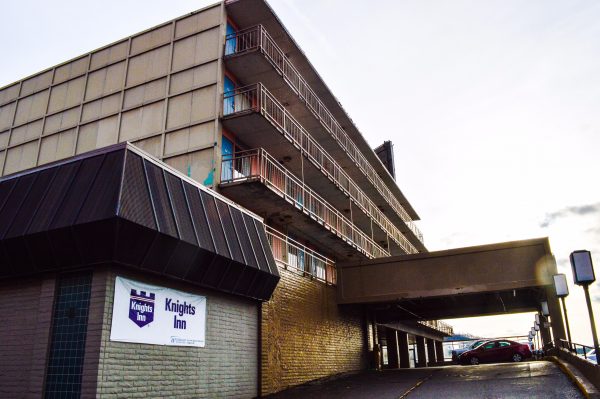
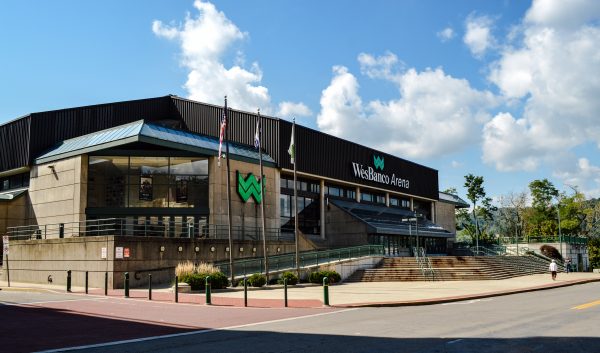
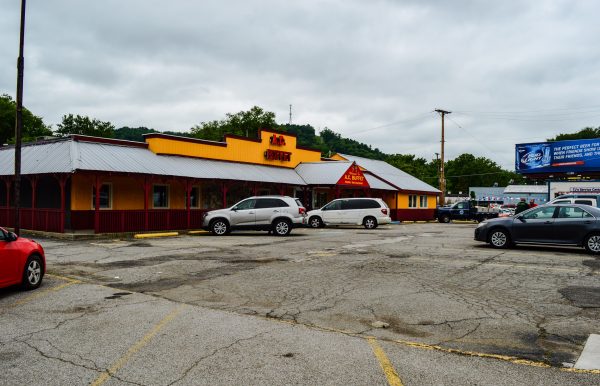
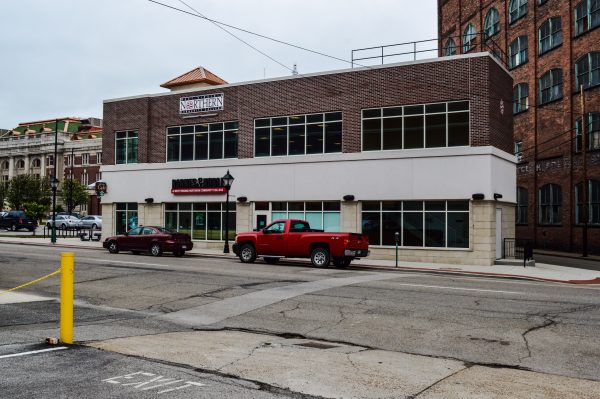
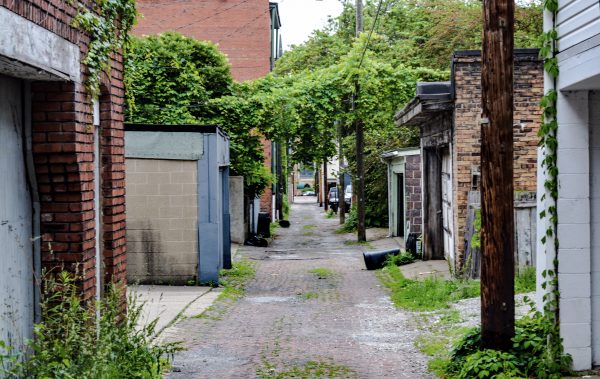
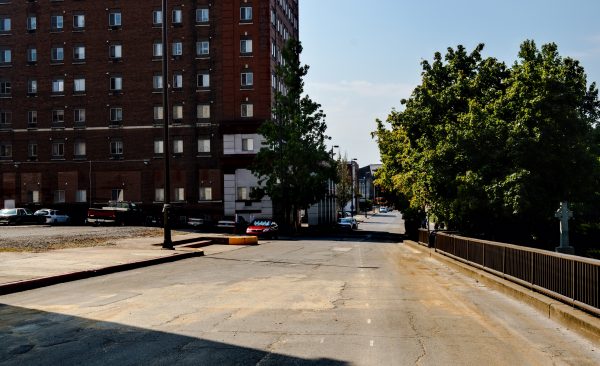
Leave a Reply
You must be logged in to post a comment.